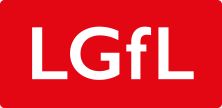Module 4B: Developing a simple profile of a learner’s sensory likes and dislikes
To help support learners with autism, and in fact other learners with sensory processing needs, we need to understand how their sensory differences may create a barrier to their learning.
A sensory profile will provide this vital information. Very simply, this is just a list of a learners sensory ‘likes’ and ‘dislikes.’ Everyone has them! The thought of touching polystyrene, smelling petrol or hearing the sound of a knife scraping across a plate might be a pleasant, or distressing, experience.
A simple sensory profile records a learner’s likes and dislikes across all of their seven sensory systems:
- Vision
- Hearing
- Touch
- Taste
- Smell
- Movement (vestibular and proprioceptive senses)
With the information collected from a learner’s sensory profile, we can begin to identify what changes in the learning environment we need to make to reduce barriers to their learning.

Supporting Documentation (Click to download)

Key Points
- A learner’s sensory differences may create barriers to their successful learning
- A learner’s sensory profile will provide the information we need to reduce these barriers

Thinking Point
Can you list the sensory likes and dislikes or complete a sensory profile for a child you know has sensory needs? Remember to think about all of the sensory systems.
